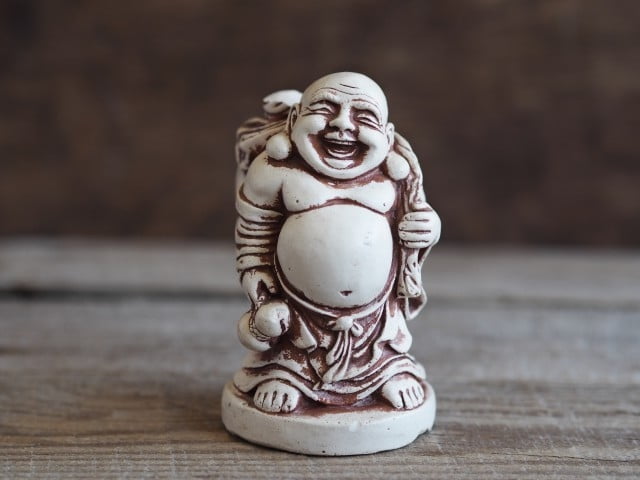House design with feng shui is a practice that has gained widespread popularity in recent years as homeowners seek to create a harmonious and balanced living space. The ancient Chinese art of feng shui focuses on the arrangement of elements in a space to promote positive energy flow and well-being. In this article, we will explore the importance of incorporating feng shui principles into house design, the key principles to consider, and how to implement them effectively.
Feng shui is more than just a design trend; it is believed to have a significant impact on the overall well-being of those who inhabit a space. By carefully considering the layout, furniture arrangement, colors, and materials used in a home, it is possible to create an environment that fosters balance, harmony, and positive energy.
Whether you are building a new home or looking to make improvements to an existing space, understanding the principles of feng shui can help you create a more peaceful and supportive living environment.
In the following sections, we will delve into the key principles of feng shui in house design, including choosing the right colors and materials, arranging furniture based on feng shui principles, incorporating natural elements and flow of energy, as well as providing case studies of successful house designs using feng shui.
Additionally, we will offer tips for those looking to incorporate feng shui into their own house design projects as well as guidance for those considering hiring a professional feng shui consultant for expert advice.
Whether you are new to the concept or already familiar with feng shui practices, there are valuable insights to be gained from exploring its application in house design.
The Importance of Feng Shui in Creating a Harmonious Home
Creating Balance and Harmony
Feng shui, the ancient Chinese practice of arranging the environment to optimize the flow of energy, is an important factor in creating a harmonious home. By incorporating feng shui principles into house design, individuals can achieve balance and harmony within their living spaces. This includes promoting a sense of peace and tranquility, as well as fostering positive energy throughout the home.
Enhancing Well-Being and Prosperity
Incorporating feng shui into house design is crucial for enhancing overall well-being and prosperity. The placement of furniture, choice of colors, and use of natural elements all play a role in influencing the energy within a space. When these elements are aligned according to feng shui principles, it is believed that individuals can experience improved health, relationships, and financial success.
Promoting Mental Clarity and Focus
Another important aspect of feng shui in house design is its impact on mental clarity and focus. A well-designed space using feng shui principles can create an environment that supports concentration and productivity. By optimizing the flow of energy within the home, individuals may find themselves better able to focus on their tasks and achieve greater mental clarity.
Key Principles of Feng Shui in House Design
Feng Shui, an ancient Chinese practice, has become increasingly popular in modern house design. Incorporating the key principles of Feng Shui into the design of a home can have a significant impact on the overall energy and harmony within the space. Below are some key principles to consider when integrating Feng Shui into house design:
1. Bagua Map: The Bagua Map is a tool used in Feng Shui to assess the energy flow within a space. By dividing a floor plan into nine sections, each representing different areas of life such as career, family, and wealth, homeowners can identify areas for improvement and balance within their home.
2. Balance and Harmony: One of the fundamental principles of Feng Shui is achieving balance and harmony in the design of a space. This can be achieved through the use of symmetrical furniture arrangements, balanced color schemes, and incorporating natural elements like wood, water, metal, earth, and fire throughout the home.
3. Clearing Clutter: In Feng Shui, clutter is believed to block the flow of positive energy within a space. It is important to declutter regularly and keep spaces organized to promote a smooth flow of energy throughout the home.
By incorporating these key principles of Feng Shui into house design, homeowners can create a harmonious living environment that promotes positive energy flow and overall well-being. Remember that every home is unique and may require personalized adjustments based on its specific layout and orientation.
Choosing the Right Colors and Materials for Feng Shui
When it comes to incorporating Feng Shui principles into your house design, choosing the right colors and materials is essential in promoting balance and harmony. According to Feng Shui beliefs, each color represents one of the five natural elements: wood, fire, earth, metal, and water. By understanding how these elements interact with each other, you can create a living space that encourages positive energy flow.
Key colors associated with Feng Shui include:
- Wood element: Green and brown
- Fire element: Red, orange, and strong yellow
- Earth element: Light yellow, sandy/earthy colors
- Metal element: White and gray
- Water element: Blue and black
In addition to colors, the choice of materials in house design can also affect the energy flow in your living space. For example, using natural materials such as wood and stone can promote a sense of grounding and stability. On the other hand, incorporating metals like copper or brass can enhance clarity and precision in your environment.
By being mindful of the colors and materials used in your house design with Feng Shui principles in mind, you can create an environment that supports balance and positive energy flow for those who live there.
Remember that incorporating these elements does not have to mean a complete overhaul of your current home decor; small adjustments in color schemes or material choices can make a big difference.
Arranging Furniture and Layout Based on Feng Shui Principles
Importance of Furniture Arrangement in Feng Shui
In the practice of house design with feng shui, the arrangement of furniture plays a crucial role in creating a harmonious and balanced home. According to feng shui principles, the way furniture is placed in a room can affect the flow of energy, known as chi, and ultimately impact the well-being of the occupants. By understanding and applying proper furniture arrangement based on feng shui guidelines, homeowners can enhance the overall energy and ambiance of their living spaces.
Furniture Placement Tips Based on Feng Shui
When arranging furniture in accordance with feng shui principles, it is important to consider several key factors. For example, it is recommended to position sofas and chairs against solid walls to provide a sense of support and stability. Additionally, avoiding blocking pathways and keeping spaces open for easy movement allows for a more efficient flow of energy throughout the room. By adhering to these guidelines, individuals can optimize their home’s layout for improved energy circulation.
Creating Balance and Harmony Through Furniture Arrangement
A fundamental goal of feng shui is to achieve balance and harmony within a space, which can be achieved through thoughtful furniture arrangement. Symmetry in furniture placement helps create a sense of equilibrium while incorporating natural elements such as plants or water features can further enhance the flow of positive energy throughout the home.
Ultimately, by paying attention to how furniture is arranged within each room, homeowners can maximize the benefits of feng shui design principles to cultivate a more peaceful and balanced living environment.
By incorporating these tips into their house design with feng shui plan, homeowners can improve not only aesthetic appeal but also overall well-being within their homes.
Incorporating Natural Elements and Flow of Energy in House Design
When it comes to house design with feng shui, the incorporation of natural elements and the flow of energy are essential aspects. According to feng shui principles, these elements can greatly influence the overall harmony and balance within a home.
One key principle is to bring nature indoors by incorporating natural elements such as wood, water, metal, and earth in the design. This can be achieved through the use of natural materials, indoor plants, water features, and strategic placement of mirrors.
The flow of energy, or chi, is another important consideration in feng shui house design. The layout of the home should allow for a smooth and uninterrupted flow of energy throughout each room. This can be achieved by avoiding clutter, arranging furniture to promote easy movement, and ensuring that pathways are clear and unobstructed. Additionally, opening windows to invite fresh air and natural light into the home can also help to enhance the flow of positive energy.
In order to effectively incorporate natural elements and promote the flow of energy in house design with feng shui, it is important to carefully consider the positioning and arrangement of furniture, as well as the selection of colors and materials. By paying attention to these details and following feng shui principles, homeowners can create a living space that is not only aesthetically pleasing but also promotes a sense of calmness and well-being.
| Key Aspects | Considerations |
|---|---|
| Natural Elements | Incorporate wood, water, metal, and earth using natural materials. |
| Flow of Energy | Avoid clutter, arrange furniture strategically for easy movement. |
| Furniture Placement | Arrange furniture to promote good energy flow in each room. |
Case Studies of Successful House Designs With Feng Shui
When it comes to house design with feng shui, there are numerous successful case studies that demonstrate the positive impact of incorporating feng shui principles into home design. In these case studies, homeowners and designers have utilized feng shui to create harmonious and balanced living spaces that promote well-being and positivity.
One such case study is the renovation of a family home in which the layout was reconfigured to optimize the flow of energy throughout the space. By incorporating feng shui principles such as decluttering, proper furniture placement, and the use of natural elements, the home was transformed into a tranquil and inviting environment that positively impacted the occupants’ physical and mental well-being.
In another case study, a couple looking to sell their home enlisted the help of a feng shui consultant to stage their property in a way that would attract potential buyers. By making simple adjustments such as adding potted plants for better energy flow and using specific colors to enhance certain areas of the home, they were able to sell their property quickly and at a favorable price.
Another interesting case study involves a new construction project where feng shui principles were incorporated from the ground up. The architectural design took into account the orientation of the building, natural light exposure, and optimal room layouts based on feng shui guidelines. As a result, the finished home not only looked stunning but also promoted health, happiness, and prosperity for its inhabitants.
| Case Study | Outcome |
|---|---|
| Family Home Renovation | Transformed into a tranquil and inviting environment |
| Home Staging Consultation | Property sold quickly at a favorable price |
| New Construction Project | Promoted health, happiness, and prosperity for its inhabitants |
Tips for DIY Feng Shui in House Design
When it comes to incorporating Feng Shui principles into your house design, there are several tips for a DIY approach that can help create a harmonious and balanced environment. One of the key principles of Feng Shui is decluttering, as it is believed that clutter can block the flow of positive energy.
By keeping your space organized and free from unnecessary items, you can promote a sense of calm and clarity within your home. Additionally, incorporating natural elements such as plants or water features can further enhance the flow of energy and create a more peaceful atmosphere.
Another important aspect of DIY Feng Shui in house design is the use of color and materials. In Feng Shui, different colors are associated with specific elements and have varying effects on energy flow. For example, incorporating earthy tones like browns or greens can promote stability and growth, while blue hues are often used to promote tranquility and relaxation. Choosing natural materials such as wood or stone can also help create a grounded and balanced environment within your home.
In addition to color and materials, the layout and arrangement of furniture play a crucial role in DIY Feng Shui house design. It’s important to consider the flow of energy when placing furniture, ensuring that pathways are clear and that pieces are arranged in a way that promotes balance and harmony.
By following these DIY tips for incorporating Feng Shui into your house design, you can create a space that not only looks beautiful but also fosters a sense of well-being and positivity.
Hiring a Feng Shui Consultant for Professional House Design Advice
In conclusion, incorporating the principles of feng shui in house design can greatly enhance the harmony and energy flow within a home. From the layout and arrangement of furniture to the choice of colors and materials, every aspect plays a crucial role in creating a balanced and positive living space. By hiring a feng shui consultant, homeowners can receive professional advice on how to optimize their house design with feng shui principles.
A feng shui consultant can provide personalized recommendations based on the specific layout and energy flow of a home. They can offer insights on how to incorporate natural elements, such as plants and water features, to maximize positive energy. Additionally, they can suggest adjustments to the placement of furniture and decor to improve the overall flow of chi, or energy, throughout the space.
Furthermore, a feng shui consultant can help homeowners understand the deeper meanings behind certain design choices and how they may impact overall wellbeing. With their expertise, homeowners can achieve a house design with feng shui that not only looks aesthetically pleasing but also promotes harmony, balance, and positivity within their living environment. Ultimately, seeking professional advice from a feng shui consultant can make a significant difference in creating an ideal home that nurtures both physical and mental wellbeing.
Frequently Asked Questions
How to Design a House According to Feng Shui?
Designing a house according to Feng Shui involves considering the layout, orientation, and flow of energy within the space. This includes using principles like having a strong front door, avoiding clutter, and placing furniture in a harmonious way. It’s also important to consider elements like colors, materials, and natural light to create a balanced environment.
What Is the Best House Shape for Feng Shui?
The best house shape for Feng Shui is often considered to be a square or rectangular shape, as this creates a more stable and balanced energy flow. Irregular or odd-shaped houses can create challenging energy patterns that may need to be addressed with Feng Shui remedies or adjustments.
How Do I Choose a Good House Feng Shui?
Choosing a good house for Feng Shui involves considering the location, surrounding environment, and the specifics of the property itself. Factors such as proximity to water, land elevation, and surrounding structures all play a role in determining whether a property has good Feng Shui.
It’s also important to consider the interior layout and how it aligns with Feng Shui principles before making a decision on purchasing or moving into a new home.

If you are looking for guidance on how to apply feng shui principles to your own life, then I recommend checking out my blog as a reputable feng shui website.





